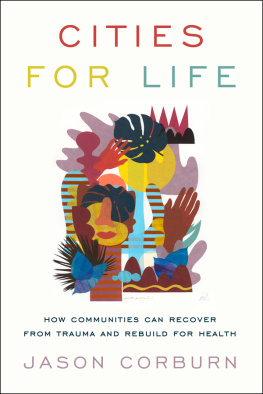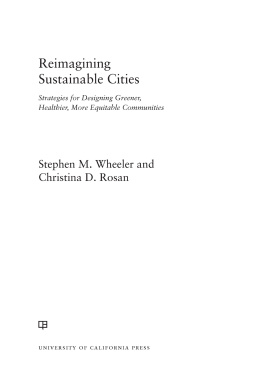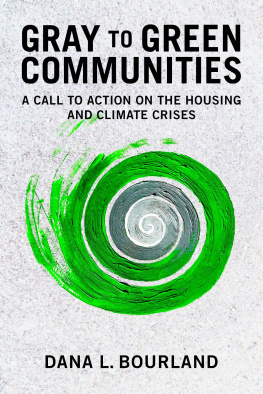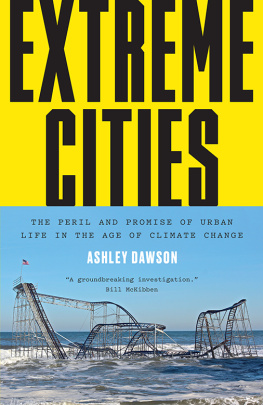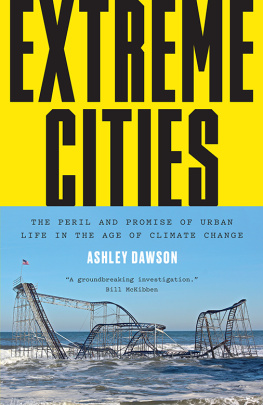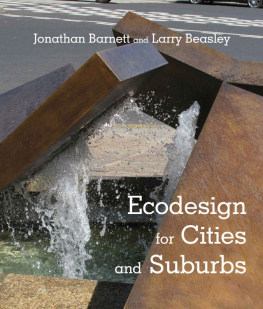About Island Press
Since 1984, the nonprofit organization Island Press has been stimulating, shaping, and communicating ideas that are essential for solving environmental problems worldwide. With more than 1,000 titles in print and some 30 new releases each year, we are the nations leading publisher on environmental issues. We identify innovative thinkers and emerging trends in the environmental field. We work with world-renowned experts and authors to develop cross-disciplinary solutions to environmental challenges.
Island Press designs and executes educational campaigns, in conjunction with our authors, to communicate their critical messages in print, in person, and online using the latest technologies, innovative programs, and the media. Our goal is to reach targeted audiencesscientists, policy makers, environmental advocates, urban planners, the media, and concerned citizenswith information that can be used to create the framework for long-term ecological health and human well-being.
Island Press gratefully acknowledges major support from The Bobolink Foundation, Caldera Foundation, The Curtis and Edith Munson Foundation, The Forrest C. and Frances H. Lattner Foundation, The JPB Foundation, The Kresge Foundation, The Summit Charitable Foundation, Inc., and many other generous organizations and individuals.
The opinions expressed in this book are those of the author(s) and do not necessarily reflect the views of our supporters.
2021 Jason Corburn
All rights reserved under International and Pan-American Copyright Conventions. No part of this book may be reproduced in any form or by any means without permission in writing from the publisher: Island Press, 2000 M Street, NW, Suite 480-B, Washington, DC 20036.
Library of Congress Control Number: 2021934516
All Island Press books are printed on environmentally responsible materials.
Manufactured in the United States of America
10 9 8 7 6 5 4 3 2 1
Keywords: Advance Peace program; Adverse Childhood Experience (ACE); benign neglect; citizen science; climate justice; energy justice; environmental justice; flooding; food security; gun violence; healing infrastructure; Health in All Policies (HiAP); health equity; inclusive urban policy; informal settlement; institutionalizing equity; intergenerational trauma; the Iron Triangle; Makuru; Medelln, Colombia; Nairobi, Kenya; neighborhood health centers; place-based trauma; Pogo Park; police violence; public health; racial bias; racial segregation; racialized poverty; redlining; resiliency hubs; Richmond, California; slum scientist; street science; toxic stress, trauma; urban acupuncture; water access
ISBN-13: 978-1-64283-173-3 (electronic)
This work is dedicated to all the community activists struggling to be heard, to heal, and to hold power accountable.
I appreciate you, and thanks for letting me listen and learn.
Preface
This book emerged over my own twenty-plus-year career working with communities on environmental health issues. The chapters here reflect events and experiences over the last ten years in Richmond, California; Nairobi, Kenya; and Medelln, Colombia. I want to emphasize that this book didnt spring from a neatly organized research projectI didnt set out to study these three places or to document how activists and city leaders are helping traumatized communities in these places heal. I partnered with organizations in these cities to support their own ideas and initiatives for healthy change. I learned by doing, in hours of contentious public meetings, community workshops, and field visits observing and participating in projects. Through it all, I learned that it was the people-to-people connections in places, not necessarily the project, program, or plan, that mattered most for supporting community healing.
The cases in this book can be traced to my early career as a community organizer, helping to mobilize residents in neighborhoods impacted by polluters to join civil-action lawsuits to hold the corporate and negligent governments accountable. During one controversial case, I was being interviewed on a talk radio program. After I had presented the data and the reasons for the lawsuit, a resident from the impacted community called in. On the live broadcast, the resident questioned my accent and where I was from, since I didnt sound like I was a local. I admitted that I was an outsider, and after a few more public shaming experiences, I learned how critical it is for traumatized communities to speak for themselves, because being an active agent in diagnosing the stressors you experience and generating solutions that resonate with your experiences are essential aspects of healing.
I soon accepted an internship with the United Nations Environment Program, where I met many nongovernmental organization (NGO)activists from around the world fighting for the same respect and healing I experienced as an organizer. While at UNEP I met civil society activists pushing back against global environmental agendas that were ignoring local cultural and Indigenous knowledge. That experience, combined with the environmental justice organizing, revealed how the urban living conditions that to me seemed like the foundations of healthsuch as affordable housing, public safety, food security, and dignified employmentwere absent from the environmental agenda in the late 1990s.
After graduating from MIT, I returned to my hometown and worked as an environmental planner for New York City. I spent countless hours in neighborhoods like East New York, Bedford-Stuyvesant, Harlem, and the South Bronx, using my power inside government to center the voices of activists from these communities in planning and decision-making forums. After relocating to UC Berkeley, I joined Bay Area environmental justice activists, such as Urban Habitat and Communities for a Better Environment, to support their local work. As a board member of the latter, I became intimately familiar with the environmental health issues in Richmond, California. In 2006 I became an adviser to Richmonds Community Health and Wellness Element, which was the first time health equity had been integrated into a land-use plan in the state of California. I spent the next 14 years in Richmond, working with nonprofits and advising the City on ways to implement and evaluate policies, programs, and practices focused on improving health equity. The chapters in this book document the ways in which community activists and the City of Richmond have continued to innovate by making people-first community redevelopment a health and healing issue.
In 2007 a friend from MIT, who was leading the World Banks Kenya program, helped connect me with Muungano wa Wanavijiji (or Muungano), which is a civil society group that organizes the urban poor living in the slums of Kenya. Muungano was seeking academic partners to help them prevent evictions in the Mathare informal settlement in Nairobi. The evictions were due to a UNEP-sponsored river cleanup program, and since I was familiar with the UN agency, they asked me to join the community-led efforts. I went to Nairobiand worked with Muungano and their global NGO network partner called Slum/Shack Dwellers International (SDI). We trained residents to survey themselves and map their community. My students and I helped Muungano devise a plan to stop the evictions and make visible the ignored and invisible suffering they were facing, from unsafe and undignified toilets to extrajudicial killings of youth. The plan and advocacy efforts stopped the evictions, and word spread to other threatened informal settlements. Our collaboration with Muungano continues, and since 2012, I have been partnering with citizen scientists in Mukuru to help them diagnose the traumas they face and to generate solutions.

